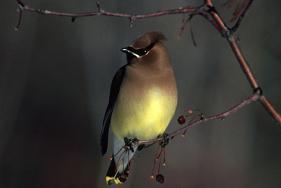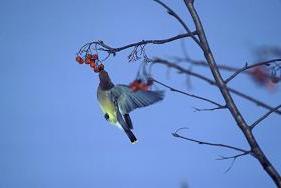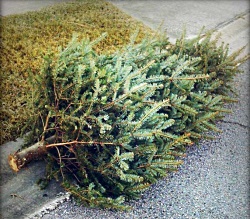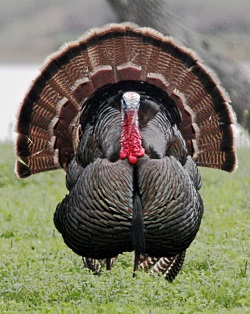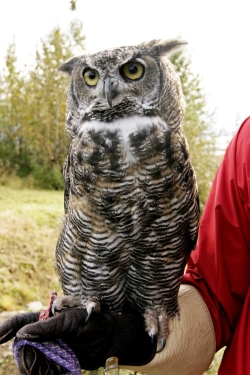
Photographer: Karen Laubenstein
US FWS Digital Library
Societies and peoples the world over have harbored superstitious fears of owls. In truth, only small mammals and other like-sized prey should tremble in the presence of these fierce, stealthy predators. Most owls hunt by night, aided by light-sensitive vision and keen directional hearing. Most owls also call at night, and although not melodic, you can learn to identify owls by their calls. Today I will feature two common owls of the nine species that you can expect in Utah.
The Great Horned Owl is Utah’s largest owl, the size of a Red-tailed hawk. It’s correspondingly loud and booming call is a series of “who’s”.
[Kevin Colver: Great Horned Owl (Private Library)]
Great Horned Owls breed early, so expect to hear their hooting duets on our long winter nights. They hunt at night from a tree perch, swooping down to catch their prey. They primarily feed on rodents, skunks and other mammals.
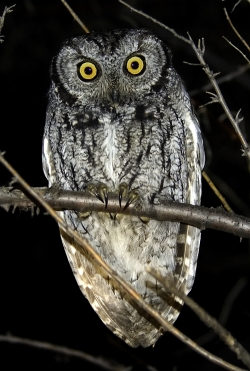
Copyright © 2007 Lu Giddings
My second choice is the Western Screech Owl, one of our several small owls. Its look-alike eastern relative makes a whinnying cry, far different from the Western Screech Owl’s own call, which sounds like a bouncing ball.
[Kevin Colver: Western Screech Owl (Private Library)]
These smaller owls all feed on mice, voles and large insects. The male calls at dusk.
With persistence and luck, you can see these camouflaged owls roosting in the daytime too. Check out flocks of mobbing birds. Crows commonly raise a ruckus around Great Horned Owls, whereas chickadees will fuss stridently around small owls like the Western Screech Owl. But listening at night remains the best way to meet most of Utah’s owls.
Thank-you to Kevin Colver for the use of his bird recordings.
This is Linda Kervin for Bridgerland Audubon Society.
Credits:
Bird Recordings: Courtesy & Copyright Kevin Colver, Western Screech Owl & Great Horned Owl (Private Collection), https://wildaboututah.org/about-us/#7loons
Pictures: Great Horned Owl, Karen Laubenstein, US FWS Digital Library
Western Screech Owl, Courtesy & Copyright 2007 Lu Giddings
Text: Jim Cane, Bridgerland Audubon Society
Voice: Linda Kervin
Additional Reading:
Great Horned Owl, Utah Division of Wildlife Resources, Department of Natural Resources, State of Utah, https://fieldguide.wildlife.utah.gov/?species=bubo%20virginianus
Western Screech Owl, Utah Division of Wildlife Resources, Department of Natural Resources, State of Utah, https://fieldguide.wildlife.utah.gov/?species=megascops%20kennicottii
Backhouse, Frances, Owls of North America, Firefly Books, 2008, https://www.amazon.com/Owls-North-America-Frances-Backhouse/dp/1554073421
For Children:
Yolen, Jane, Owl Moon, https://www.amazon.com/Owl-Moon-Jane-Yolen/dp/0399214577

